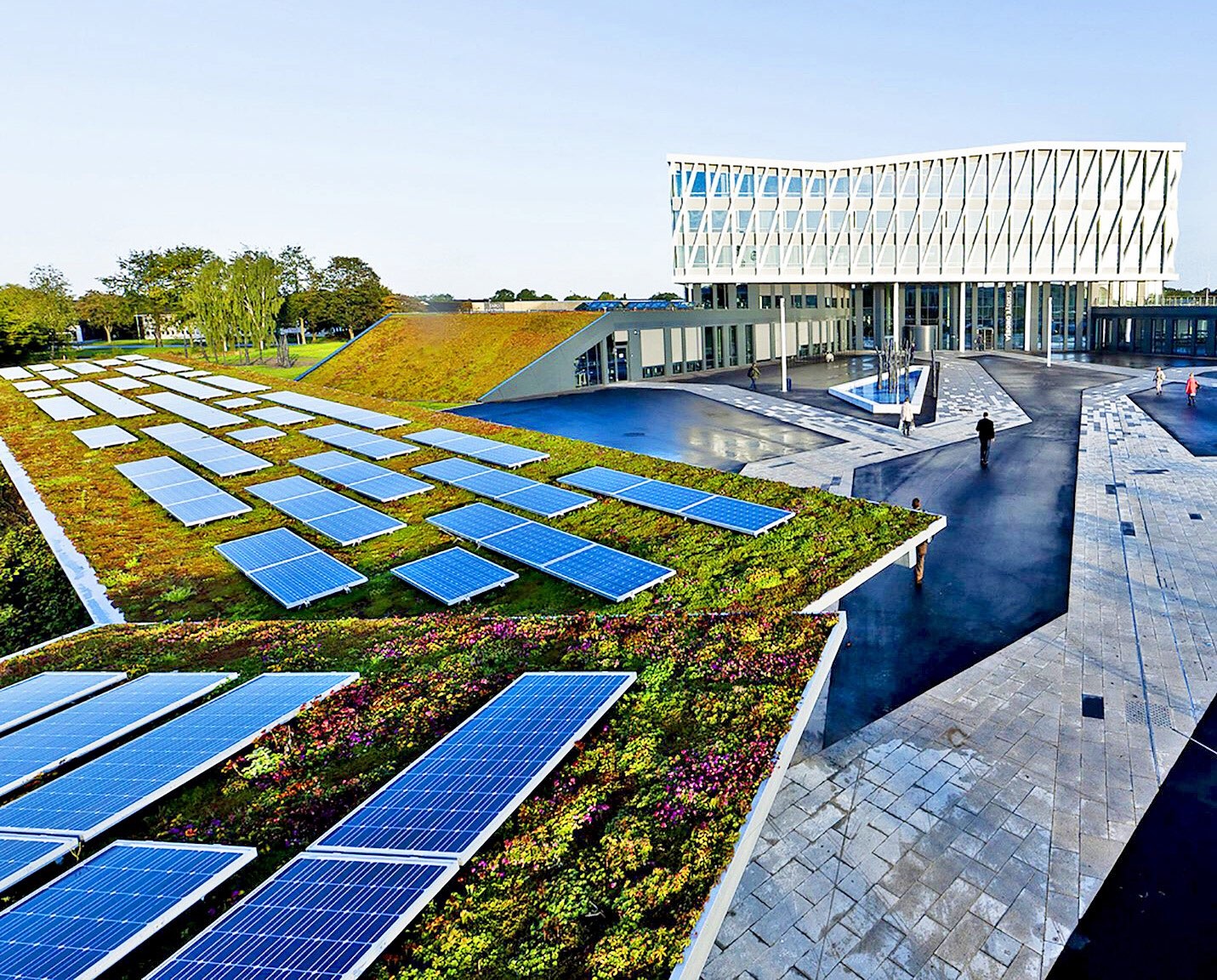Green Roofs Boost Solar Energy Output Compared To White Roofing: Study

Global warming is constantly looming over humanity like a dark cloud drawing ever closer. Though the push for renewable energy has gathered steam in the last 20 years, we are still a long way from detaching ourselves from fossil fuels.
The growth in solar power technology, which is one of the most abundant and usable forms of energy available, has stagnated. The cost of making a solar panel is very high and the dream of every home running on sunlight seems to be a lost battle.
But, two doctoral students from the University of Kansas School of Architecture & Design have demonstrated methods of optimizing the capture of sunlight in experiments.
A solar panel is most efficient when it is run at a temperature of 77 F. With every degree increase after that, the output decreases steadily. The researchers looked for a way to "extract the heat out of the panels" when the temperature rises above 77 F to improve efficiency.
The researchers compared three types of roof materials, where solar panels are mostly placed. The performances of the panels placed on white or reflective rooftops were compared to conventional (black) and vegetated (rooftops with plant grown below the dollar panels, hence green) rooftops.
The students installed temperature, humidity and light sensors and a weather station to record conditions like wind speed. The sensors made recordings every five minutes for a year.
Current industry notions are that white, being the most reflective, is the most efficient; but the team found that the black roof performed better because the heat reflected by the white surface onto the panels was too intense.
However, the team found that vegetative roofs performed best compared to the high-reflective and conventional roof material.
Panels installed over the green roof performed best, generating an average of 1.4 percent more energy as compared with those over the white and black roofs, said a press release by University of Kansas.
“There is a lot of research in this area, but nothing as comprehensive as he has done,” said Mohammed Alshayeb's (lead of the research) faculty adviser, associate professor of architecture Jae Chang, in the release. “The next step is to see the effect of increasing the height of the panel over the roof.”
The team also studied the impact of light shelves on the output of solar cells. A traditional light shelf is a fixed, horizontally mounted plane that can be placed either outside, inside or on both sides of a window to help create reflecting surfaces for more light to enter a house.
The team wants to experiment with movable light shelves that will reflect light into homes based on the sun’s position at a particular point in the day, thereby reducing the amount of artificial light needed during the day.
They have designed a moving light-shelf system they call Dynamic Thermal-Adaptive Curved Lightshelf (DTACL) “What if there were a system that could combine all these methods to enhance the delivery of natural light into buildings throughout the day without the use of mechanical and electrical controls, and unlike existing movable systems?” Afnan Barri, one of the students who was a part of the research, was quoted as saying.
ARTICLE SOURCE: http://www.ibtimes.com/green-roofs-boost-solar-energy-output-compared-white-roofing-study-2637581
IMAGE SOURCE: Inhabitat




